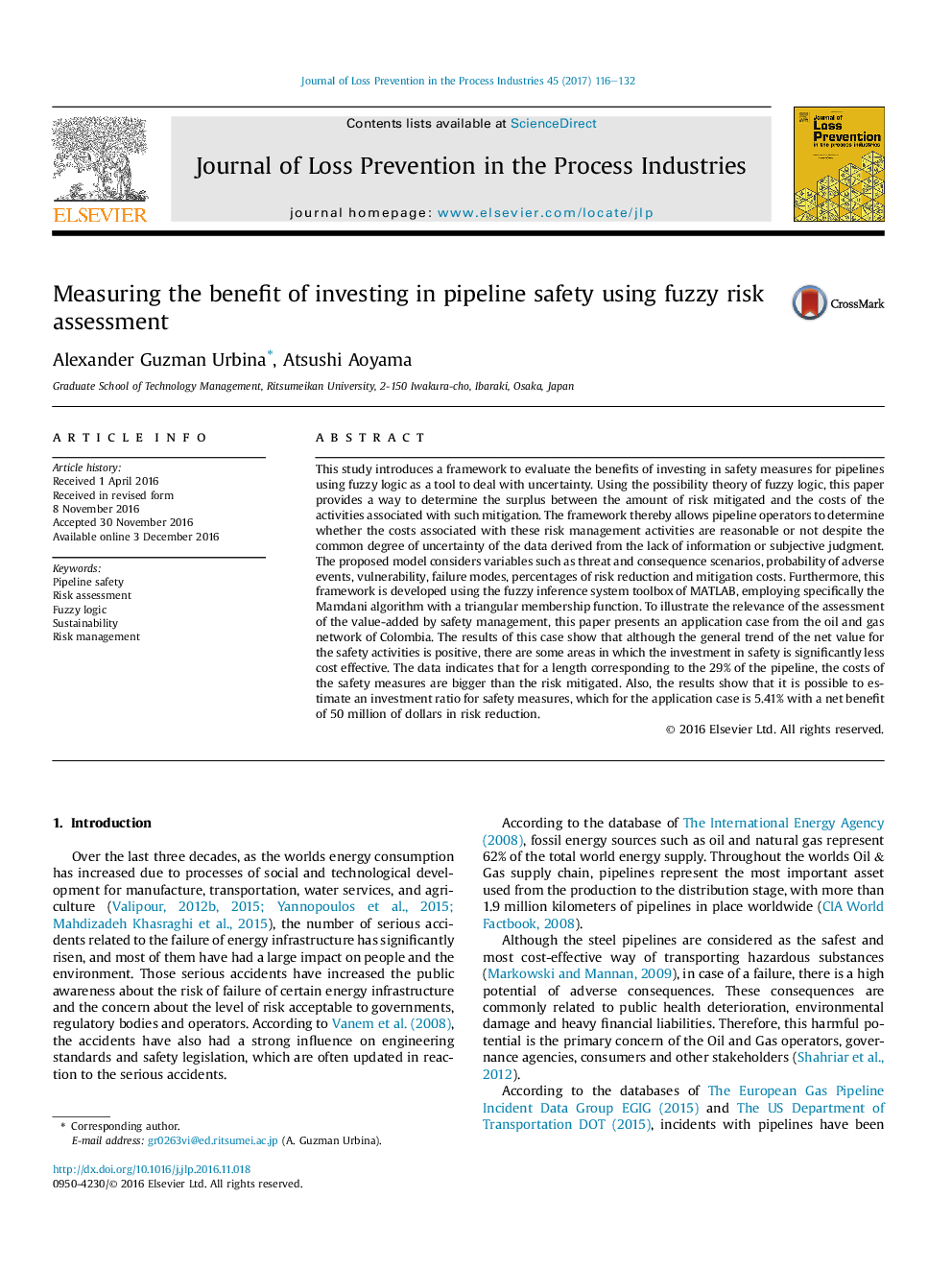| Article ID | Journal | Published Year | Pages | File Type |
|---|---|---|---|---|
| 4980246 | Journal of Loss Prevention in the Process Industries | 2017 | 17 Pages |
â¢A novel methodology to quantify the benefit of investing in safety measures for pipelines is proposed.â¢The methodology relies in an infernce system that estimates the value of the risk using the possibility theory of the fuzzy logic, with the aim to deal efficiently with the uncertainty of the data.â¢Combination of the techniques of fuzzy risk assessment and cost benefit analysis to improve the decision making process in the safety management of pipelines.
This study introduces a framework to evaluate the benefits of investing in safety measures for pipelines using fuzzy logic as a tool to deal with uncertainty. Using the possibility theory of fuzzy logic, this paper provides a way to determine the surplus between the amount of risk mitigated and the costs of the activities associated with such mitigation. The framework thereby allows pipeline operators to determine whether the costs associated with these risk management activities are reasonable or not despite the common degree of uncertainty of the data derived from the lack of information or subjective judgment. The proposed model considers variables such as threat and consequence scenarios, probability of adverse events, vulnerability, failure modes, percentages of risk reduction and mitigation costs. Furthermore, this framework is developed using the fuzzy inference system toolbox of MATLAB, employing specifically the Mamdani algorithm with a triangular membership function. To illustrate the relevance of the assessment of the value-added by safety management, this paper presents an application case from the oil and gas network of Colombia. The results of this case show that although the general trend of the net value for the safety activities is positive, there are some areas in which the investment in safety is significantly less cost effective. The data indicates that for a length corresponding to the 29% of the pipeline, the costs of the safety measures are bigger than the risk mitigated. Also, the results show that it is possible to estimate an investment ratio for safety measures, which for the application case is 5.41% with a net benefit of 50 million of dollars in risk reduction.
Graphical abstractDownload high-res image (145KB)Download full-size image
